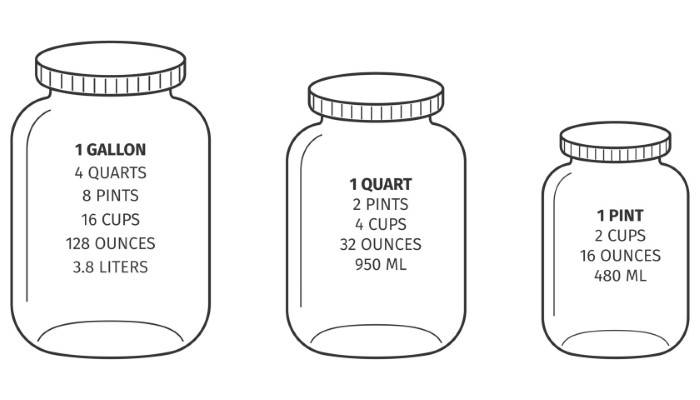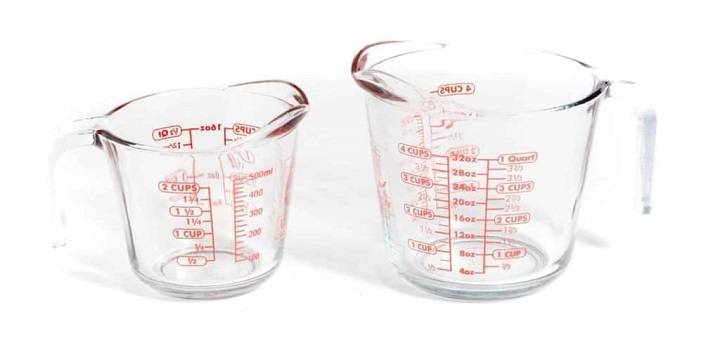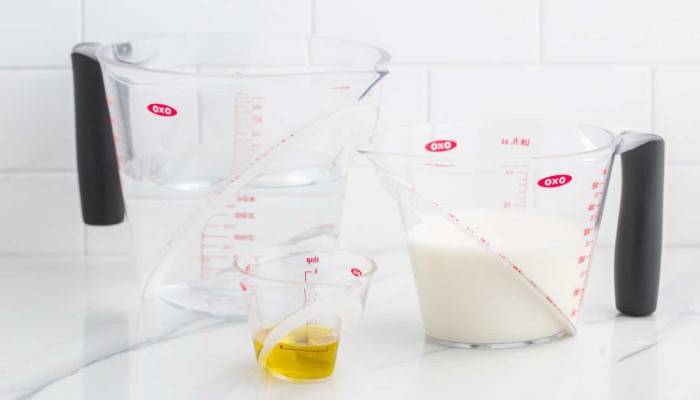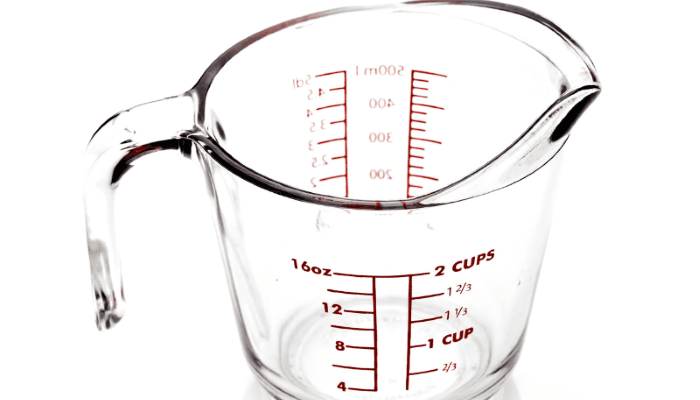In the culinary world, precise measurements are crucial for achieving the desired results in recipes. Whether you’re a seasoned chef or a novice cook, understanding kitchen measurements and conversions is essential. One common question that often arises is, “How many cups are in a quart?” This comprehensive guide will not only answer that question but also delve into the intricacies of various kitchen measurements, conversions, and practical tips for accurate cooking and baking.
Basic Kitchen Measurements

The Importance of Accurate Measurements
Accurate measurements are the foundation of successful cooking and baking. They ensure consistency, balance, and the right texture in your dishes. Incorrect measurements can lead to unsatisfactory results, such as dry cakes, overly salty dishes, or sauces that don’t thicken properly.
Common Kitchen Measurement Units
Understanding the common measurement units used in recipes is the first step toward mastering kitchen conversions. These units include:
- Teaspoon (tsp)
- Tablespoon (tbsp)
- Cup (c)
- Pint (pt)
- Quart (qt)
- Gallon (gal)
Understanding Quarts and Cups
What is a Quart?
A quart is a unit of liquid capacity equal to two pints or one-fourth of a gallon. The term “quart” comes from the Latin word “quartus,” meaning fourth, indicating its position as a quarter of a gallon. Quarts are commonly used in both the United States customary system and the British imperial system, though the exact volume differs slightly between the two.
What is a Cup?
A cup is a unit of volume measurement commonly used in cooking and serving sizes. It is equal to 8 fluid ounces in the United States customary system. Cups are a standard measurement in recipes for both liquid and dry ingredients.
How Many Cups in a Quart?
Standard Conversion
In the United States customary system, there are 4 cups in a quart. This conversion is based on the following relationships:
- 1 quart = 2 pints
- 1 pint = 2 cups
Therefore:
- 1 quart = 2 pints × 2 cups per pint = 4 cups
Imperial System Conversion
In the British imperial system, the quart is slightly larger than the US quart. However, the basic conversion remains the same:
- 1 imperial quart = 4 imperial cups
Visualizing the Conversion
To help visualize this conversion, think of a quart as a large container that can hold four smaller cups of liquid. This can be particularly useful when scaling recipes up or down.
Practical Applications in Cooking and Baking
Scaling Recipes
Understanding how to convert cups to quarts is essential when scaling recipes. For example, if a recipe calls for 1 quart of liquid but you want to make a half batch, you would use 2 cups. Conversely, if you need to double a recipe that requires 2 cups of liquid, you would use 1 quart.
Measuring Ingredients
Accurate measurement of ingredients, particularly liquids, is crucial in cooking and baking. Using a liquid measuring cup, which is typically transparent and has a spout for pouring, ensures precise measurements. Dry measuring cups should be used for dry ingredients to avoid inaccuracies.
Substitutions and Adjustments
When substituting ingredients, knowing the volume equivalents can help maintain the integrity of the recipe. For example, if you run out of a specific ingredient measured in quarts, you can easily convert the measurement to cups to use an alternative.
Other Common Kitchen Conversions
Pints to Cups
- 1 pint = 2 cups
This conversion is useful when a recipe calls for pints, but your measuring tools are in cups.
Gallons to Quarts and Cups
- 1 gallon = 4 quarts
- 1 gallon = 16 cups
Understanding these conversions helps when dealing with larger quantities of ingredients.
Tablespoons to Cups
- 1 cup = 16 tablespoons
This conversion is particularly useful for small-scale measurements and adjustments in recipes.
Teaspoons to Tablespoons
- 1 tablespoon = 3 teaspoons
This is handy for precise measurements of small quantities, especially in baking.
Tips for Accurate Measuring
Using the Right Tools
Using the correct measuring tools for the job is crucial. Liquid measuring cups should be used for liquids, while dry measuring cups are best for dry ingredients. Measuring spoons should be used for both liquid and dry ingredients in small quantities.
Leveling Dry Ingredients
When measuring dry ingredients, use a straight edge, such as the back of a knife, to level off the top of the measuring cup or spoon. This ensures you are using the exact amount required by the recipe.
Reading Liquid Measurements at Eye Level
When measuring liquids, place the measuring cup on a flat surface and bend down to read the measurement at eye level. This prevents errors caused by looking at the measurement from an angle.
Using a Kitchen Scale
For the most accurate measurements, especially in baking, consider using a kitchen scale. Weighing ingredients can eliminate inconsistencies caused by different methods of filling measuring cups.
Historical Context and Evolution of Measurements
Origins of the Quart and Cup
The quart and cup measurements have historical roots in early trade and commerce. Over time, these units have been standardized to ensure consistency in recipes and commercial transactions.
Standardization of Measurements
The standardization of kitchen measurements has evolved to facilitate more accurate and reliable cooking and baking. The United States customary system and the British imperial system have established specific volumes for quarts and cups, helping cooks and bakers achieve consistent results.
Adoption in Recipes
As recipes have become more widely shared through cookbooks and online platforms, the use of standardized measurements like quarts and cups has become essential. This standardization allows recipes to be accurately reproduced, regardless of geographic location.
Global Variations in Measurement Systems
Metric System
Many countries use the metric system for kitchen measurements, which includes liters and milliliters instead of quarts and cups. Understanding metric conversions can be helpful when using international recipes.
- 1 quart = 0.946 liters
- 1 cup = 240 milliliters
Adapting Recipes
When adapting recipes from the metric system to the US customary system, it’s important to use precise conversions to maintain the integrity of the recipe. Tools like conversion charts and online calculators can assist in these conversions.
Cultural Influences
Culinary traditions around the world have influenced the adoption and adaptation of measurement systems. Understanding these cultural differences can enhance your appreciation of global cuisine and improve your cooking skills.
Common Kitchen Measurement Mistakes
Using the Wrong Measuring Tool
One of the most common mistakes is using the wrong type of measuring tool for a specific ingredient. For example, using a dry measuring cup for liquids can lead to inaccurate measurements and affect the outcome of the recipe.
Misreading Measurements
Misreading measurements, especially liquid measurements, can result in errors. Always read the measurement at eye level and ensure the measuring tool is on a flat surface.
Not Leveling Dry Ingredients
Failing to level dry ingredients can lead to using too much or too little of an ingredient, which can significantly impact the recipe’s success. Always level off the top of the measuring cup or spoon with a straight edge.
Ignoring Temperature Differences
The temperature of ingredients can affect their volume. For example, flour that has been sifted or packed can have different volumes. It’s important to follow the recipe’s instructions regarding ingredient preparation.
Fun Facts and Trivia About Kitchen Measurements
Historical Measurements
In ancient times, measurements were often based on everyday objects. For example, a “cup” might have been literally the size of a drinking cup used by the person measuring.
Evolution of the Measuring Cup
The modern measuring cup, as we know it, was invented in the 19th century and has since become a staple in kitchens worldwide. It has evolved to include markings for various units of measurement.
Unusual Measurement Units
Throughout history, various cultures have used unique units of measurement. For example, the “gill” was a unit used to measure liquids and was equal to a quarter of a pint.
Culinary Superstitions
In some cultures, there are superstitions related to kitchen measurements. For example, it’s believed that adding a pinch of salt to a recipe can ward off bad luck or that using odd numbers of ingredients can bring good fortune.
Related Post:
A Court of Thorns and Roses: An In-Depth Exploration of Sarah J. Maas’s Enchanting Series
Shop Coffee Tables on Sale: A Comprehensive Guide to Finding the Perfect Piece
First Day of Summer 2024: Embracing the Warmth and Joy of the Season
Understanding how many cups are in a quart is just one aspect of mastering kitchen measurements. Accurate measurements are the foundation of successful cooking and baking, ensuring that recipes turn out as intended. By familiarizing yourself with common measurement units, conversions, and practical tips, you can enhance your culinary skills and achieve consistent results in the kitchen.
Whether you’re scaling recipes, measuring ingredients, or adapting international dishes, the knowledge of kitchen measurements will serve you well. Embrace the precision and creativity that come with cooking and baking, and enjoy the delicious results that follow.




